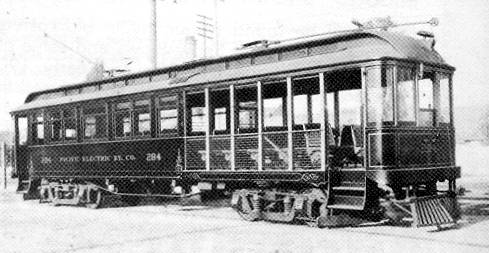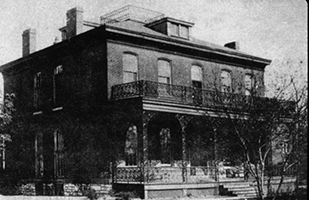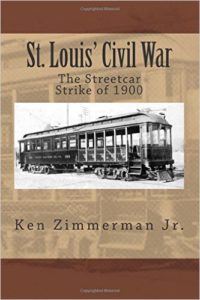Streetcar Strike Claims First Victim
Szerdán, Május 9, 1900, A második napon a Szent. Louis villamosa Strike, egy eltévedt golyó ölte meg Frank Liebrecht. Frank Liebrecht, a spanyol-amerikai háború veteránja, nézte a sztrájk rally sarkán Finney és N. Taylor Avenue. A rally, some in the crowd observed the last two streetcars for the day coming down the tracks about a block away. The crowd rushed the streetcars and began throwing stones at one of the streetcars.
At least one worker on the streetcar began firing into the crowd. Inspector Dan O’Donovan admitted firing into the crowd. At least seven shots rang out. One of the bullets struck Frank Liebrecht in the neck. Several men carried Liebrecht to the Missouri Baptist Sanitorium at 909 N. Taylor Avenue a few hundred feet from the tracks but it was too late. Liebrecht lived only a few minutes after being shot.
St. Louis Police detained everyone on the streetcar at the DeHodiamount station. St. Louis Police arrested Dan O’Donovan and four other streetcar workers for Liebrecht’s death. Detective Frank Strorer and Sergeant Taylor found witnesses at the scene of the shooting, while Lieutenant Nicholas Mansfield led the investigation. I could not find any more references to Dan O’Donovan and the other workers. Based on the streetcar being under attack from some in the crowd and the feeling among the city’s elite at the time, I am sure their attorneys were able to make a strong case for self defense.
Frank Liebrecht fought in the Spanish-American War and took part in the Battle of San Juan Hill. Liebrecht was ill with one of the many maladies that the soldiers picked up in the Cuban jungle. He returned to the United States to recover. He turned 21 years of age in March 1900.
The shooting was one of the few violent incidents during the second day of the protest. Mounted Policeman William L. Long was escorting the streetcars at Tenth and Locust Streets, when he was knocked off his horse by a brick. Several protesters were also clubbed by policemen, when the policemen felt threatened at Sixth and Carr Streets.
The protest was mainly peaceful though. The streetcars were only running from 5 a.m. a 7 p.m. on May 9th. The two streetcars that passed the rally about 7 p.m. were the last two streetcars for the day.
The violence would continue to escalate. Liebrecht was the first of many fatalities. Dozens would be killed and hundreds injured by the time the strike collapsed in September 1900. The strike would divide the upper and lower classes into a shooting war where people were killed. Members of the working class refused to ride the streetcar until the strike was settled. The Sheriff had to form a posse, which was made up mostly of wealthy members of society.
The police department did not have enough manpower to both patrol the city and maintain order on the streetcar lines. Several police officers walked off the job rather than enforce court orders demanding that the strikers return to work. Most of the fatalities would be on the strikers’ side but one policeman lost his life.
You can leave a comment or ask a question about this or any post on my Facebook oldal.
Pin It



